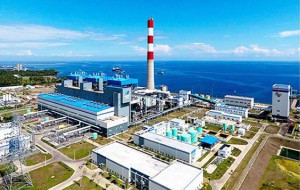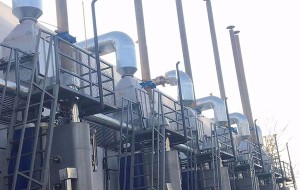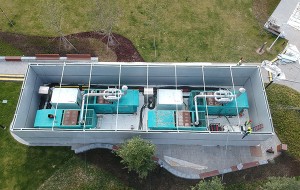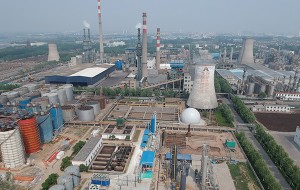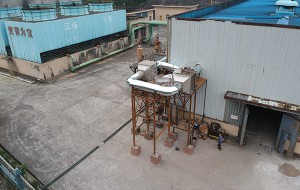Power Plant
Landfill gas power generation refers to power generation through a large amount of biogas (LFG landfill gas) produced by anaerobic fermentation of organic matter in the landfill, which not only reduces the air pollution caused by waste incineration, but also makes effective use of resources.
Technical introduction
Electric power plant is a power plant (nuclear power plant, wind power plant, solar power plant, etc.) that converts some form of raw energy (such as water, steam, diesel, gas) into electric energy for fixed facilities or transportation.
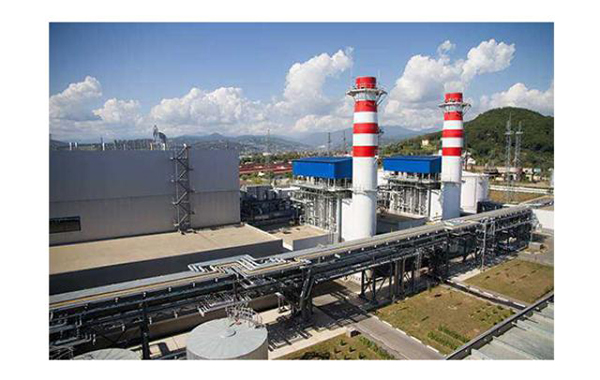
Method
Flue gas denitration refers to reducing the generated NOx to N2 to remove NOx in flue gas. According to the treatment process, it can be divided into wet denitration and dry denitration. Some researchers at home and abroad have also developed a method to treat NOx waste gas with microorganisms.
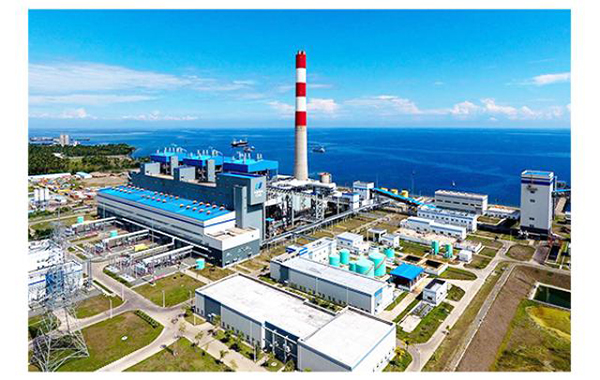
Since more than 90% of NOx in the flue gas discharged from the combustion system is no, and no is difficult to dissolve in water, the wet treatment of NOx cannot be carried out by simple washing method. The principle of flue gas denitration is to oxidize no into NO2 with oxidant, and the generated NO2 is absorbed by water or alkaline solution, so as to realize denitration. O3 oxidation absorption method oxidizes no to NO2 with O3, and then absorbs it with water. HNO3 liquid produced by this method needs to be concentrated, and O3 needs to be prepared with high voltage, with high initial investment and operation cost. ClO2 oxidation-reduction method ClO2 oxidizes no to NO2, and then reduces NO2 to N2 with Na2SO3 aqueous solution. This method can be combined with the wet desulfurization technology using NaOH as desulfurizer, and the desulfurization reaction product Na2SO3 can be used as the reductant of NO2. The denitration rate of ClO2 method can reach 95% and desulfurization can be carried out at the same time, but the prices of ClO2 and NaOH are high and the operation cost increases.
Wet flue gas denitration technology
Wet flue gas denitration uses the principle of dissolving NOx with liquid absorbent to purify coal-fired flue gas. The biggest obstacle is that no is difficult to dissolve in water, and it is often required to oxidize no to NO2 first. Therefore, generally, no is oxidized to form NO2 by reacting with oxidant O3, ClO2 or KMnO4, and then NO2 is absorbed by water or alkaline solution to realize flue gas denitration.
(1) Dilute nitric acid absorption method
Because the solubility of no and NO2 in nitric acid is much greater than that in water (for example, the solubility of no in nitric acid with a concentration of 12% is 12 times greater than that in water), the technology of using dilute nitric acid absorption method to improve the removal rate of NOx has been widely used. With the increase of nitric acid concentration, its absorption efficiency is significantly improved, but considering industrial application and cost, the nitric acid concentration used in practical operation is generally controlled in the range of 15% ~ 20%. The efficiency of NOx absorption by dilute nitric acid is not only related to its concentration, but also related to the absorption temperature and pressure. Low temperature and high pressure are conducive to the absorption of NOx.
(2) Alkaline solution absorption method
In this method, alkaline solutions such as NaOH, Koh, Na2CO3 and NH3 · H2O are used as absorbents to chemically absorb NOx, and the absorption rate of ammonia (NH3 · H2O) is the highest. In order to further improve the absorption efficiency of NOx, two-stage absorption of ammonia alkali solution is developed: firstly, ammonia reacts completely with NOx and water vapor to produce ammonium nitrate white smoke; The unreacted NOx is then further absorbed with an alkaline solution. Nitrate and nitrite will be generated, and NH4NO3 and nh4no2 will also be dissolved in alkaline solution. After several cycles of the absorption solution, after the alkali solution is exhausted, the solution containing nitrate and nitrite is concentrated and crystallized, which can be used as fertilizer.


